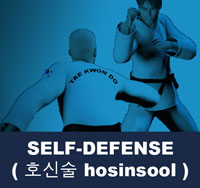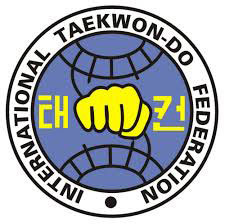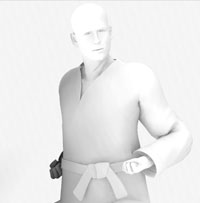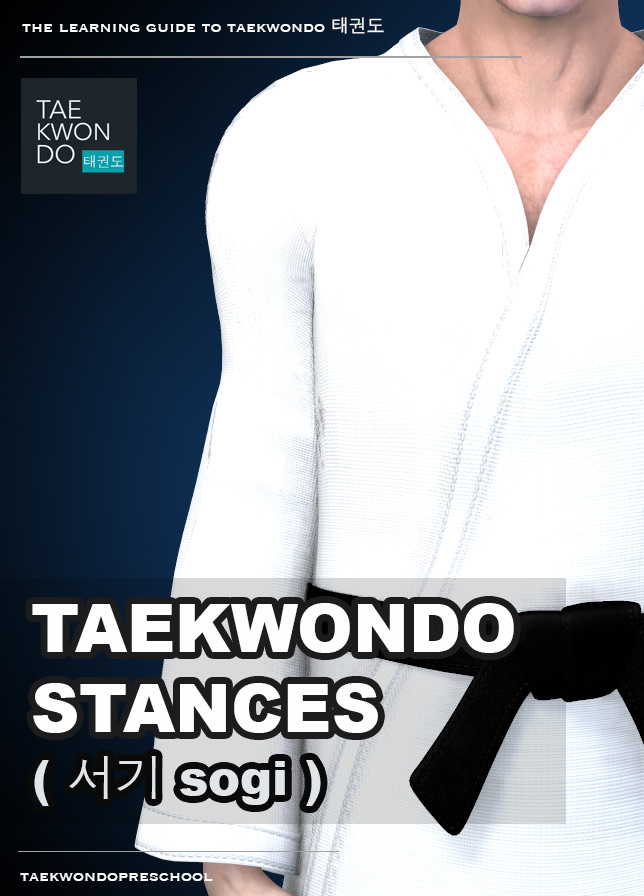Taekwondo 태권도Taekwondo Preschool
When you reach senior belt you are expected to guide the junior belts when they are beginning Taekwondo such as showing by example. To advance from one rank to the next, students typically complete promotion tests in which they demonstrate their proficiency in the various aspects of the art before a panel of judges or their teacher. View Taekwondo belt levels »

Self Defense
( 호신술 hosinsool )
Taekwondo competition provides an opportunity for students to display their understanding of Taekwondo self-defense applications and the ability to put together their own team choreography.
Self-Defense ( 호신술 hosinsool ) is a countermeasure that involves defending the health and well-being of oneself from harm. Self-defense techniques and recommended behavior under the threat of violence is systematically taught in self-defense ( 호신술 hosinsool ) classes.
It forms one of the main principles of the taekwondo art. The self-defense ( 호신술 hosinsool ) applications would be difficult to score in sparring as they are designed primarily to cause injury or quickly incapacitate an adversary.
Physical self-defense is the use of physical force to counter an immediate threat of violence. Such force can be either armed or unarmed. In either case, the chances of success depend on a large number of parameters, related to the severity of the threat on one hand, but also on the mental and physical preparedness of the defender.
Mental self-defense is the ability to get into the proper mindset for executing a physical self-defense technique. Many martial arts schools and self-defense classes focus primarily on the physical nature of self-defense and often neglect the mental aspect. If you are skilled in the physical aspects of a defensive technique, but lack the mental toughness and tenacity to execute it, you will not be able to perform - especially under duress.
Controlled environments cannot easily mimic the stress and adrenaline dump which occurs during an attack. There is a very real need to be able to enter the proper "warrior mindset" if one is to have a realistic chance of surviving a potentially deadly encounter. This warrior mindset is the ability to focus purely on the successful outcome of a situation without becoming concerned with the consequences, even if they prove fatal in the dedicated pursuit of your desired outcome.
The ability to go over, under, around or through any obstacle is the essence of this "never quit" mindset - similar to that of the Samurai of Japan. Self-preservation is a very powerful motivator and it is essential for ensuring that one has the mental toughness and proper mindset to emerge the victor in an encounter with one or more attackers/aggressors.
Competition and Demonstration Applications
In competition, self-defense techniques take the format of a demonstration event, much like poomse 품새 . One person is usually designated the part of the taekwondo practitioner, while several team mates take the role of common street aggressors who attack from various angles with punches, kicks and grabs common to street brawlers. Weapons may also be used, as taekwondo has specific techniques for dealing with armed adversaries.
Taekwondo self-defense ( 호신술 hosinsool ) competition provides an opportunity for students to display their understanding of taekwondo self-defense applications and the ability to put together their own team choreography. Self-defense routines are often performed as demonstration displays for the public, in which case there are no judges present. Many taekwondo clubs include self-defense ( 호신술 hosinsool ) in their daily routine in both World Taekwondo (WT)  and International Taekwondo Federation (ITF)
and International Taekwondo Federation (ITF)  .
.

Training Safety Precautions
Overtraining can be described as a point where a person may have a decrease in performance and plateauing as a result from failure to consistently perform at a certain level or training load exceeds their recovery capacity. They cease making progress, and can even begin to lose strength and fitness. Overtraining is also known as chronic fatigue, burnout and overstress in athletes.
It is important to note the difference between overtraining and over-reaching; over-reaching is when an athlete is undergoing hard training but with adequate recovery, overtraining however, is when an athlete is undergoing hard training without the adequate recovery. View Overtraining »
* Please see a certified Master Instructor ( 사범님 sabeomnim ) for training. Proper guidance and instructions are needed to ensure safe training.

Self Defense ( 호신술 hosinsool )
Main Concepts of Self-defense ( 호신술 hosinsool )
There are two main concepts in taekwondo self-defense ( 호신술 hosinsool ). For real life combat situations, an experienced taekwondo practitioner is versed in the following:
- Linear (or hard) techniques
- Circular (or soft) techniques
Linear Techniques
These include mostly punching, kicking, headbutts and other striking maneuvers. Force is countered with force and all limbs are involved in stopping an adversary. Taekwondo kicks have a wide reach that keeps the adversary at a distance. With proper execution opponents may be incapacitated with a single blow, which lessens the number of attacks in encounters with multiple people.
Circular Techniques
These emphasize redirection and manipulation rather than strength. The adversary can be manipulated into a position whereby a lock, stranglehold and/or finishing move can be applied. Grappling techniques are used both as a means of securing an adversary and escaping from an adversary's grip. Soft self-defense techniques like the stranglehold or joint lock can be used to subdue the attacker, avoiding dealing permanent injury.
* Please see a certified Master Instructor ( 사범님 sabeomnim ) for training. Proper guidance and instructions are needed to ensure safe training.

Self Defense ( 호신술 hosinsool )
Snapping ( 꺾기 kkeokgi )
- Pressing and Snapping ( 눌러꺾기 nulleo-kkeokgi )
- Knee Pressing and Snapping ( 무릎 눌러꺾기 mureup-nulleo-kkeokgi )
- Elbow Pressing and Snapping ( 팔굽 눌러꺾기 palgup-nulleo-kkeokgi )
- Twisting and Snapping ( 비틀어꺾기 biteureo-kkeokgi )
- Wrist Joint Twist and Snapping ( 손목 비틀어꺾기 sonmok-biteureo-kkeokgi )
- Elbow Twist and Snapping ( 팔굽 비틀어꺾기 palgup-biteureo-kkeokgi )
Pulling out ( 빼기 ppaegi )
- Pressing and Pulling ( 눌러빼기 nulleo-ppaegi )
- Turning and Pulling ( 틀어빼기 teureo-ppaegi )
- Downward Turning and Pulling ( 아래로 틀어빼기 araero-teureo-ppaegi )
- Upward Turning and Pulling ( 위로 틀어빼기 wiro-teureo-ppaegi )
- Swing and Pulling ( 휘둘러빼기 hwidulleo-ppaegi )
Grabbing ( 잡기 japgi )
Evading or Dodging ( 피하기 pihagi )
- Twisting Evasive Technique ( 비틀어피하기 biteureo-pihagi )
- Ducking Evasive Technique ( 숙여피하기 sugyeo-pihagi )
- Back Leaning Evasive Technique ( 젖혀피하기 jeocheo-pihagi )
- Turning Evasive Technique ( 틀어피하기 teureo-pihagi )
Throwing down or Tripping up ( 넘기기 neomgigi )
- Tripping-up Technique or Sweeping Technique ( 걸어넘기기 georeo-neomgigi )
- Ankle Tripping-up Technique ( 발목 걸어넘기기 balmok-georeo-neomgigi )
- Inner Knee Tripping-up Technique ( 오금 걸어넘기기 ogeum-georeo-neomgigi )
- Throwing-down Technique ( 들어넘기기 deureo-neomgigi )
- Inner Knee Throwing down Technique ( 오금 들어넘기기 ogeum-deureo-neomgigi )

Related Articles
Self-Defense ( 호신술 hosinsool ) is to protect yourself from being attacked from would-be aggressors. It is a countermeasure that involves defending the health and well-being of oneself from harm and is designed primarily to cause injury or quickly incapacitate an attacker, in addition to being a deterrent against them. Attackers are typically larger, stronger, and are often armed or have an accomplice. With proper execution attackers may be incapacitated with a single blow, which lessens the number of attacks with multiple people. View Self-Defense ( 호신술 hosinsool ) »
Risk of injury can be reduced by completing an effective warm up consisting of a heart raiser to get your pulse up, followed by sport specific dynamic stretches (stretches whilst moving). Please follow the guidance of a certified Master Instructor or trainer when doing sports related activities. Depending on the intensity of the exercise, cooling down can involve a slow jog or walk, or with lower intensities, stretching can be used. Cooling down allows the heart rate to return to its resting rate. View more information on Warming Up and Cooling Down ».
This article uses material from the Wikipedia articles "Warming Up" and "Cooling Down", which is released under the Creative Commons Attribution-Share-Alike License 3.0.
RESOURCES
This article uses material from the Wikipedia articles "List of Taekwondo Techniques Self Defense" and "Self-defense", which is released under the Creative Commons Attribution-Share-Alike License 3.0.




















